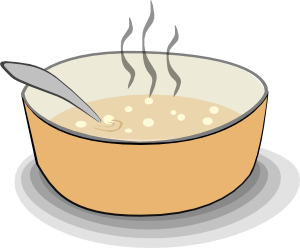Vegetable Soup
0
Overview
Using this Resource
Connecting to the Curriculum
Marking Student Responses
Working with Students
Further Resources
This task is about how many vegetables are left over.

Some friends are making vegetable soup.
Task administration:
This task can be completed with pencil and paper or online (with auto marking displayed to students).
Level:
1
Curriculum info:
Keywords:
Description of task:
Students answer questions that involve subtracting numbers.
Curriculum Links:
This resource can help to identify students' ability to apply counting-on, counting-back, skip-counting, and simple grouping strategies to combine or partition whole numbers.
Students' strategies give a much better indication of the curriculum level they are working at. Students results from this trial indicated a range of adding and subtracting strategies that involved:
- Counting from one (Year 1, Number Framework Stage 1-3).
- Counting on or counting back strategies (Year 2, Number Framework Stage 4 – Advanced Counting).
- Place value partitioning using tens and ones with incorrect compensation (Year 3, Number Framework Stage 5 – Early Additive). The student recognises the role of tens and ones but cannot use them to compensate or cross the tens boundary correctly.
Links to Numeracy Professional Development Projects
Book 5: Teaching Addition, Subtraction, and Place Value: pages 23-24 (moving students from one-to-one counting to counting from one on materials or imaging), page 32 (moving students from counting all to advanced counting) and pages 41-43 (moving students from advanced counting to early additive).
Learning Progression Frameworks
This resource can provide evidence of learning associated with within the Mathematics Learning Progressions Frameworks.
Read more about the Learning Progressions Frameworks.Answers/responses:
| Y3 (04/2016) | ||
| a) | 6 | easy |
| b) | 7 | easy |
| c) | 9 | easy |
Based on an online sample of 44 Y3 students.
Diagnostic and formative information:
| Task | Common errors |
Likely Reason
Next steps
|
|
a)
b)
c)
|
7
7 or 8
8 or 10
|
Counts back too far or Counts back and includes the starting number e.g. 15 – 6: 15, 14, 13, 12, 11, 10
Students may need materials (counters, beans, number strips, plastic animals, etc) to check their solutions.
Use materials and a pot or box to recreate the scenarios, counting the leftover items that didn't get put in the 'pot'.
|
|
a)
b)
c)
|
12
15 or 14
21 or 20
|
Adds rather than subtracts or Adds rather than subtracts and includes the starting number e.g. 15, 16, 17, 18, 19, 20
Students may need assistance with interpreting word problems and understanding that the words 'left over' indicate subtraction is the required operation.
Give students word problems and have them work individually, in pairs or groups, to record the problem using the correct operator (they do not necessarily need to solve the problem).Alternatively read out a word problem and students hold up the correct operator (+ and – initially, moving on to x and ÷ as appropriate)
Making Number Sentences is a Level 2 resource that could be used with individuals, groups or the whole class to practise this skill. For further extension or ideas, Making Number Sentences II and Number Sentences and Story Problems are similar Level 3 resources. |
- Showing change
- Adding and subtracting
- Change from $10
- Lemons, library and sports
- Down at the beach
- Spending pocket money
- Working out change
- How much change?
- Number patterns
- Bear mixes
- Fractions
- Money computations
- Adding and subtracting fractions III
- Addition and subtraction facts
- Cover up
- Looking at zero II
- Number sentences III
- Seeds and sweets
- Find the missing numbers
- How to work out the answer
- Number line subtraction
- Number line addition and subtraction
- Cover up II
- Number pairs
- Going on camp
- Tens frames to twenty
- Different subtraction number sentences
- Solving more maths problems
- Easy or harder subtractions
- Looking at zero
- Party balloons
- Adding and subtracting more numbers
- Going on a picnic
- Spending at the shop
- Buying some things
- Birthday Party
- Subtraction fun

